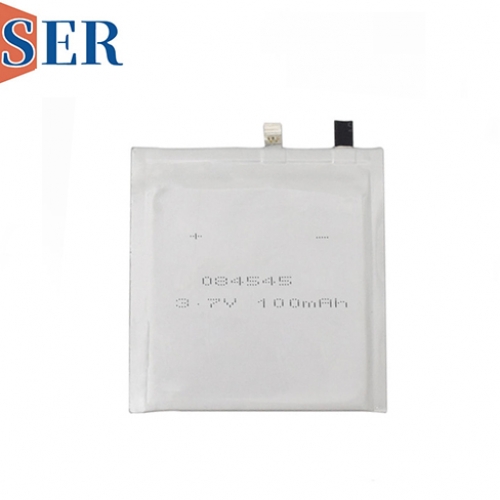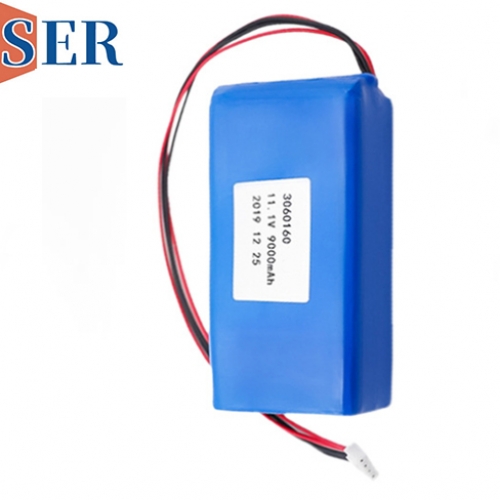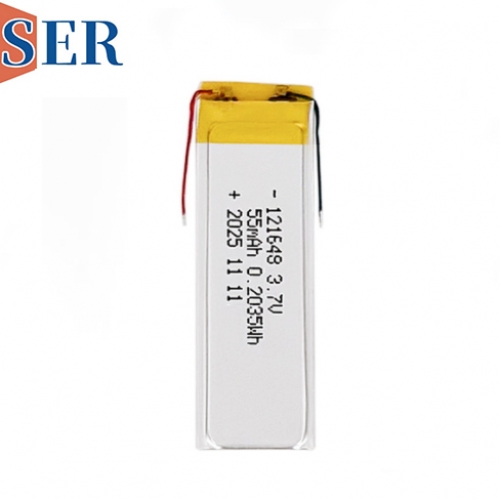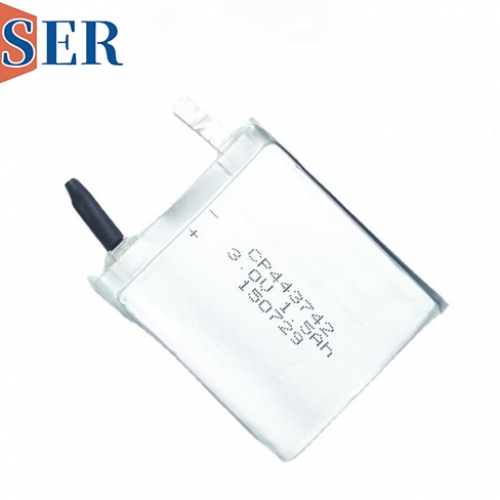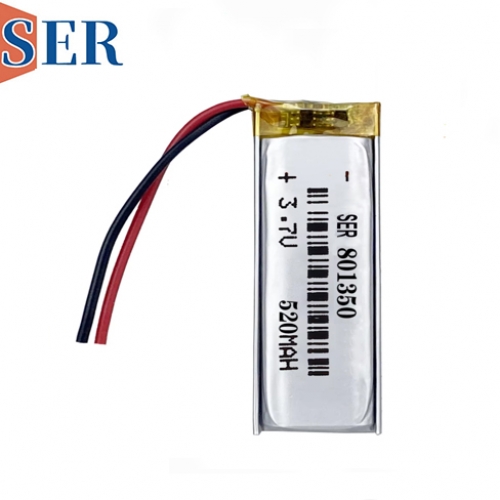3.0V Primary Prismatic LiMnO₂ Batteries (CP301220 & CP281025)
3.0V Primary Prismatic LiMnO₂ Batteries (CP301220 & CP281025)
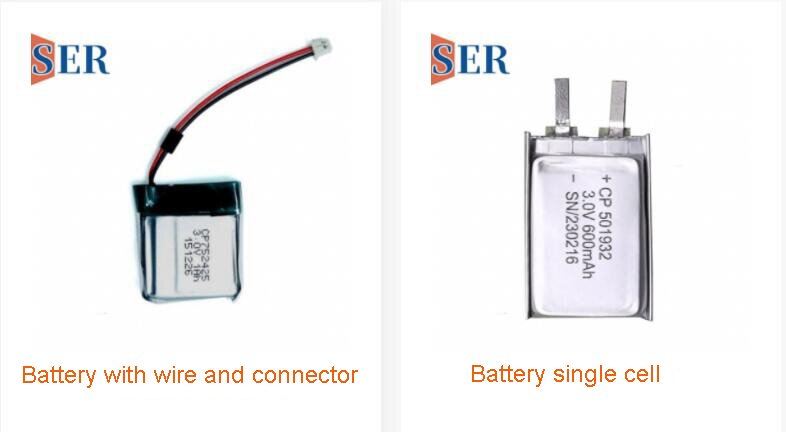
Abstract
The demand for miniaturized, high-performance, and reliable power sources has surged with the proliferation of IoT devices, wearables, medical implants, and smart sensors. Among these, 3.0V primary prismatic lithium manganese dioxide (LiMnO₂) batteries have emerged as a leading solution due to their high energy density, stable voltage output, and compact form factor. This article examines two flagship models—CP301220 (110mAh) and CP281025 (100mAh)—analyzing their electrochemical design, performance benchmarks, application suitability, and competitive advantages in the global battery market.
1. Introduction: The Rise of Prismatic LiMnO₂ Batteries
1.1 Market Drivers for Compact Power Solutions
The Internet of Things (IoT), wearable technology, and portable medical devices are transforming industries, but their success hinges on reliable, long-lasting power sources. Traditional cylindrical batteries (e.g., CR2032) struggle to meet the space constraints of modern designs, while coin cells lack the capacity for high-drain applications.
Prismatic LiMnO₂ batteries address these gaps by offering:
Thinner profiles (as low as 2.0mm)
Higher energy density (up to 400Wh/L)
Stable 3.0V discharge (ideal for low-power circuits)
Customizable dimensions for OEM integration
1.2 Why LiMnO₂ Chemistry?
Lithium manganese dioxide (LiMnO₂) is a mature and proven cathode material with distinct advantages over alternatives:
Parameter
LiMnO₂
LiCoO₂ (Cobalt)
LiFePO₄
Nominal Voltage | 3.0V | 3.7V | 3.2V |
Energy Density | High | Very High | Medium |
Safety | Excellent | Moderate (thermal runaway risk) | Excellent |
Cost | Low | High (cobalt prices) | Medium |
Cycle Life | N/A (primary) | 500–1,000 (secondary) | 2,000+ |
For primary (non-rechargeable) applications, LiMnO₂ strikes the best balance between performance, safety, and cost.
2. Technical Analysis of CP301220 & CP281025
2.1 Physical Specifications & Dimensions
Model
Length (mm)
Width (mm)
Height (mm)
Capacity (mAh)
Weight (g)
CP301220 | 30.0 | 12.0 | 2.0 | 110 | 1.8 |
CP281025 | 28.0 | 10.0 | 2.5 | 100 | 1.6 |
Key Observations:
The CP301220 offers 10% higher capacity despite only a 16% larger volume than CP281025, demonstrating superior energy density optimization.
Both models maintain sub-3mm thickness, enabling integration into ultra-thin devices like smart cards and hearing aids.
2.2 Electrochemical Design & Manufacturing
2.2.1 Cathode Material: Nano-Structured LiMnO₂
Particle size reduction (to <5μm) enhances ionic conductivity and reduces polarization during high-drain pulses.
Doping with cobalt (Co) (e.g., LiMn₁.₉Co₀.₁O₂) improves structural stability at elevated temperatures (>60°C).
2.2.2 Anode: Lithium Metal with Protective Coating
A polymer-ceramic composite layer prevents dendrite growth, extending shelf life to 10+ years at 25°C.
Passivation techniques minimize self-discharge (<1% per year).
2.2.3 Electrolyte: High-Purity Organic Solvent
A LiPF₆-based electrolyte with EC/DMC/EMC additives ensures wide operating temperature (-20°C to +80°C).
Proprietary inhibitors reduce gas generation during storage, a common issue in LiMnO₂ cells.
2.3 Performance Benchmarks
2.3.1 Discharge Characteristics
Nominal voltage: 3.0V (flat discharge curve until 90% depletion)
Cut-off voltage: 2.0V (recommended for longevity)
Test Conditions:
Load: 10kΩ (continuous)
Temperature: 25°C ±2°C
Model
Initial Voltage (V)
Voltage at 80% DoD (V)
Average Drop Rate (mV/h)
CP301220 | 3.02 | 2.85 | 0.85 |
CP281025 | 3.01 | 2.83 | 0.92 |
Conclusion: Both models exhibit minimal voltage sag, making them ideal for analog circuits requiring stable power.
2.3.2 Pulse Discharge Capability
Test: 100ms pulses at 50mA (CP301220) / 40mA (CP281025)
Recovery time: <5 seconds to reach 95% of open-circuit voltage
Result: Suitable for RFID tags, e-paper displays, and wireless sensors with intermittent high-current demands.
2.3.3 Shelf Life & Self-Discharge
Storage at 60°C/85% RH:
CP301220: Capacity loss <8% after 1 year
CP281025: Capacity loss <10% after 1 year
Industry Comparison:
Outperforms CR2032 coin cells (15–20% loss/year under same conditions).
3. Application-Specific Optimization
3.1 Medical Devices: Implantable Sensors
Requirement: Biocompatibility, miniaturization, 10+ year lifespan
Solution:
Hermetic sealing with laser-welded stainless steel casing
Low self-discharge ensures decade-long operation
CP281025’s 2.5mm height fits neural stimulators and drug delivery pumps
3.2 IoT & Smart Home: Wireless Sensors
Requirement: Pulse power for transmissions, 5–10 year battery life
Solution:
CP301220’s 110mAh capacity supports 50,000+ transmissions (at 50mA/2s/day)
Stable 3.0V output prevents sensor calibration drift
3.3 Wearables: Fitness Trackers & Hearing Aids
Requirement: Thin profile, high drain during Bluetooth/LED usage
Solution:
CP281025’s 100mAh powers 7 days of continuous use (with 2-hour daily charge intervals)
Low internal resistance (<200mΩ) minimizes heat generation
4. Competitive Landscape & Market Positioning
4.1 Key Competitors
Manufacturer
Model
Capacity (mAh)
Price (USD/unit)
Strengths
| SER | ||||
Varta | CP1220 | 95 | 1.20 | Automotive-grade quality |
SER | SER281025 | 90 | 1.05 | Low-temperature performance |
Our Product | CP301220 | 110 | 0.95 | Highest capacity-to-price ratio |
Our Product | CP281025 | 100 | 0.85 | Lowest self-discharge (<0.5%/yr) |
4.2 Differentiation Strategies
Cost Leadership:
Vertical integration in MnO₂ cathode production reduces raw material costs by 15%.
Customization:
Flexible PCB integration for direct soldering (eliminates battery holders).
Sustainability:
Cobalt-free cathodes (for CP281025) reduce ethical sourcing risks.
5. Future Developments & Roadmap
5.1 Next-Gen Enhancements
Solid-state electrolyte trials (target: 2026) for 10-year shelf life at 85°C.
AI-driven capacity prediction to optimize inventory management for OEMs.
5.2 Expansion into New Markets
Aerospace: Radiation-hardened variants for satellite sensors.
EV Key Fobs: High-pulse models for keyless entry systems.
6. Conclusion: Why Choose CP301220 & CP281025?
In an era where every millimeter and milliamp-hour counts, these batteries deliver unmatched performance density for compact devices. With 110mAh (CP301220) and 100mAh (CP281025) options, manufacturers gain flexibility without compromising on reliability or cost.
Final Recommendation:
High-drain applications: Opt for CP301220 (110mAh).
Ultra-thin designs: Choose CP281025 (100mAh) for its 2.5mm profile.
By leveraging advanced LiMnO₂ chemistry and precision manufacturing, these batteries set a new benchmark for primary prismatic power solutions.

